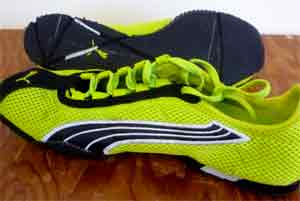‘Mobility Shoes’ Take a Load Off for Knee Osteoarthritis Sufferers
 The results of a new study by bone and joint experts at Rush University Medical Center suggest that patients with knee osteoarthritis (OA) who wear flat, flexible footwear, which allows natural foot mobility and provide sufficient support for the foot, had significant reduction in knee loading—the force placed upon the joint during daily activities.
The results of a new study by bone and joint experts at Rush University Medical Center suggest that patients with knee osteoarthritis (OA) who wear flat, flexible footwear, which allows natural foot mobility and provide sufficient support for the foot, had significant reduction in knee loading—the force placed upon the joint during daily activities.
Findings from the study were published in an issue of Arthritis & Rheumatism, a journal of the American College of Rheumatology (ACR).
The research led by Dr. Najia Shakoor, a rheumatologist at Rush, shows that long term use of the such footwear, called “mobility shoes,” helped OA patients adapt their gait or how they walk, which improved knee loading, even when the mobility shoes were no longer worn.
In previous studies, Shakoor and colleagues from Rush found that walking barefoot as well as with ‘mobility shoes,’ which are designed to mimic barefoot mechanics, was linked to reduced knee loading compared to when walking with regular footwear worn by participants. However, the authors thought the long-term effects of the specialized footwear need further studying.
“There is much interest in biomechanical interventions, such as orthotic inserts, knee braces, and footwear that aim to improve pain and delay OA progression by decreasing impact on joints,” said Shakoor, the principal investigator of the study who is also an associate professor in the department of internal medicine at Rush. “In the present study, we expand understanding of our earlier research by evaluating he impact of the mobility footwear on gait after six months of use.”
More than 27 million Americans over the age of 25 have some form of OA, which causes painful swelling and stiffness in the hand, foot, knee or hip joints. According to existing research, doctor-diagnosed arthritis will swell to 67 million U.S. adults by 2030. Furthermore, the Centers for Disease Control and Prevention (CDC) estimate that 16% of adults 45 years of age and older are burdened with symptomatic knee OA.
The Rush team recruited 16 participants with knee OA, obtaining a baseline gait with participants walking in their own shoes, mobility shoes and barefoot. Participants wore the mobility shoes for six hours each day for six days per week and patient gait was evaluated at 6, 12 and 24 weeks in all conditions.
Findings suggest that by 24 weeks, participants wearing mobility footwear saw an 18 percent reduction in knee adduction moment (KAM), which is the load on the inner or medial aspect of the knee when walking compared to baseline knee loading in their own footwear. This is where most people develop knee OA.
No significant difference in KAM was found between walking with mobility shoes and barefoot. Compared to baseline, analyses indicate an 11 percent and 10 percent reduction in KAM for OA patients walking in their own shoes and barefoot, respectively, suggesting the mobility shoes may have “re-trained” participant’s gait.
“Patients with OA who use flat, flexible footwear may experience a significant reduction in knee loading with continued use,” said Shakoor. “Our investigation provides evidence that footwear choice may be an important consideration in managing knee OA.
Source Newsroom: Rush University Medical Center

